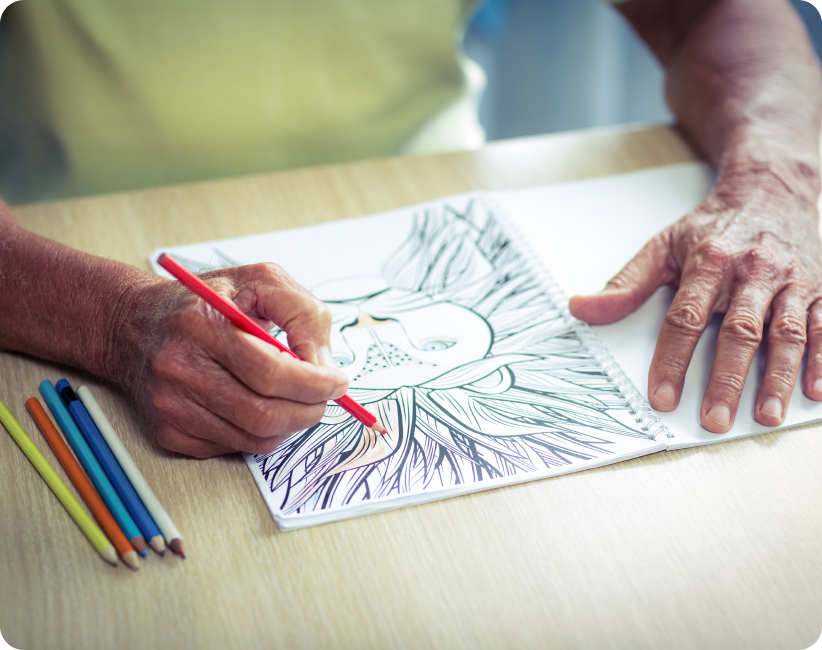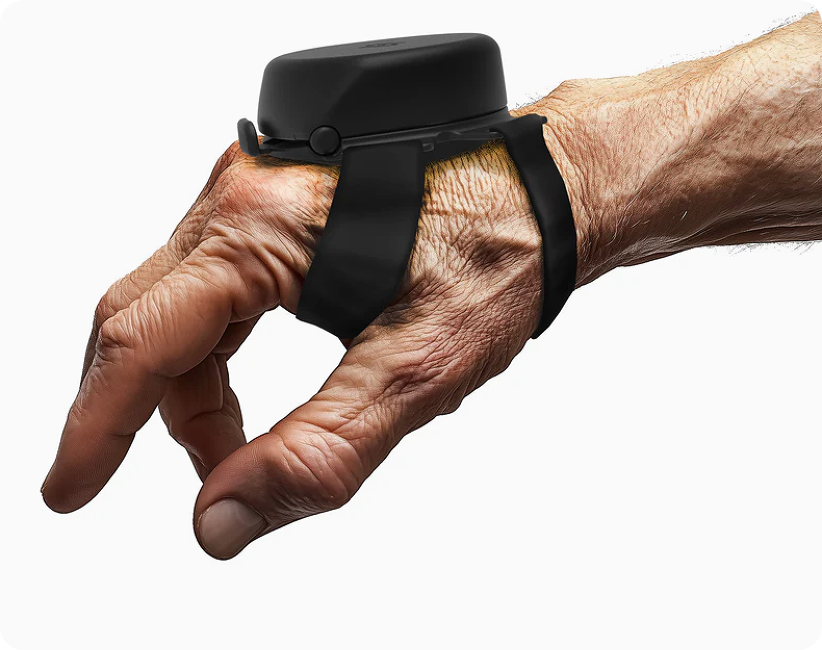

Parkinson's Disease Drawing Hacks
These Parkinson's Disease drawing hacks can make a big difference. Use weighted or ergonomic pens to reduce tremors. Add foam grips for better control and comfort. Stabilize your hand by resting your forearm on a flat surface. Draw in small, steady strokes instead of long lines. Try wrist supports or non-slip mats. With practice, these simple adjustments help improve precision and bring joy back to drawing. The right setup can make Parkinson's Disease drawing activities more fluid and enjoyable.

Artists with Parkinson’s
Countless artists with Parkinson’s still express themselves through art. One inspiring example is Tilly Wiebe, who began painting after her diagnosis in 2016. Using acrylics, she creates abstract pieces guided by emotion and color. For Tilly, painting offers escape, joy, and calm. Her work has been featured in exhibitions—proof that creativity endures, even through tremors. Her journey represents the spirit of Parkinson’s Disease drawing activities, where art becomes both therapy and freedom.

Drawing with Parkinson's Disease Feels Possible Again with Steadi-3
Testimonials
From Spills to Stability “Essential Tremor affects my daily life—writing, eating, even drinking. With Steadi-3, I feel more confident, in control, and no more spills on my shirt! I’d 100% urge anyone with Essential Tremor to give this a try.”
Frequently Asked Questions
Parkinson's Disease can affect drawing and painting by limiting fine motor control, causing tremors, stiffness, or slower hand movements. These changes can make it harder to hold tools, create precise lines, or work for long periods. But despite these challenges, many people continue to express themselves artistically. By adapting tools, like using weighted pens, angled easels, or the Steadi-3 stabilizing glove, artists with Parkinson’s can regain control and comfort. The creative process might look different, but it remains a powerful outlet for emotion, memory, and self-expression. In fact, some find that their work becomes more emotionally profound or meaningful as they learn to paint or draw in new ways. Adaptive solutions like Steadi-3 play a major role in improving control during Parkinson's Disease drawing activities.
Yes—many powerful and creative artists with Parkinson’s continue to create, inspire, and advocate. There are far too many to name in just one answer. For example, Timothy John, a contemporary painter from Australia, expresses his reality through works like Irises and Good Day, Bad Day, highlighting both control and struggle. Jonny Acheson, a doctor-turned-sketch artist, used drawings to tell his diagnosis story from his daughter’s perspective. Peter Dunlap-Shohl, a political cartoonist, created the graphic novel My Degeneration and calls himself an “accidental Parkinson’s advocate.” Others—like John McLean, Geraldine Peacock, and Jennifer Parkinson—have used their talents to raise awareness, transform pain into power, and redefine what it means to live—and create—with Parkinson’s. Their stories are central to the growing movement of Parkinson's Disease drawing, where resilience meets art.
Absolutely. Many people discover or return to art after being diagnosed with Parkinson's Disease. You don’t need prior experience—art is about exploration, not perfection. In fact, learning to paint or draw can become a deeply healing and empowering journey. With the help of adaptive tools like weighted pencils, foam grips, or stabilizing gloves, and by choosing forgiving mediums like acrylics or digital art, beginners can dive in without pressure. Art offers a chance to express emotions, focus the mind, and find joy in the present moment. Whether you sketch simple shapes or paint full canvases, creativity can flourish at any stage of your Parkinson’s journey. Starting a Parkinson's Disease drawing routine can also enhance hand coordination and strength.
The most effective Parkinson's Disease drawing techniques focus on improving control, comfort, and creative confidence. Key techniques include:
- Use short, intentional strokes instead of long lines to manage tremors.
- Break drawings into smaller sections to avoid overwhelm.
- Rest your wrist or forearm on the table for stability.
- Use weighted pens or ergonomic grips to reduce shakiness and strain.
- Angle your drawing surface to reduce wrist tension and improve posture.
- Try digital styluses with customizable pressure settings or tremor filtering for added precision.
These simple adjustments make Parkinson's Disease drawing more accessible, helping individuals with Parkinson's Disease continue creating with joy and freedom.
Yes, art therapy can be incredibly beneficial for people living with Parkinson's Disease. It provides a creative outlet to process emotions, reduce stress, and boost mental health. The act of drawing or painting stimulates brain activity, supports fine motor coordination, and helps maintain a sense of identity. For many, creating art becomes a form of mindfulness, offering focus and relaxation. Group art therapy also fosters connection and emotional support within the Parkinson’s community. Whether through guided sessions or independent creation, art therapy encourages self-expression and helps improve overall well-being, both physically and emotionally. Art therapy programs focusing on Parkinson's Disease drawing techniques continue to grow, reflecting how creativity enhances quality of life.


